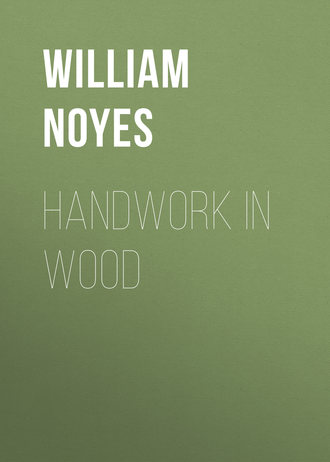Handwork in Wood
 полная версия
полная версияHandwork in Wood
Язык: Английский
Год издания: 2019
Добавлена:
Настройки чтения
Размер шрифта
Высота строк
Поля
23
For other effects obtained by chemical changes, see table on pp. 185-189 in Brannt's Painter, Gilder and Varnisher, and also Woodcraft 9: 71, June, '08.
24
Made by the Bridgeport Wood Finishing Co., 155 Fulton St., N. Y.
25
For general bibliography see p. 4.

